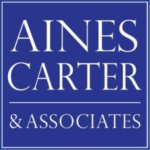Cash value life insurance, commonly known as permanent life insurance, serves a dual purpose: providing a death benefit and accumulating a cash component. This cash value can be a financial tool for policyholders, offering benefits beyond the policy’s death benefit.
Contents
Allocation of Premium Payments
When you make premium payments on a cash-value life insurance policy, these payments are divided into three parts. One part funds the policy’s death benefit, calculated based on factors such as age, health, and underwriting criteria. Then part funds the insurance company, their operating costs and their profits. What is left from the policy funds the cash value.the
Initially, the cash value only accumulates for the first two to five years. The insurance company typically invests this portion in conservative-yield investments during this period. Over time, as you continue to pay premiums and earn interest, the cash value grows.
Uses of Cash Value
Once the cash value has started to accumulate, it can be utilized in various ways, such as:
- Paying your policy premiums
- Taking out loans at lower rates compared to traditional banks
- Building an investment portfolio to maintain and grow wealth
- Supplementing retirement income
Growth Over Time
In the early stages of the policy, a more significant percentage of your premium is directed toward the cash value. However, as you age, the cost of insuring your life increases, resulting in a smaller portion of the premium being allocated to the cash value.
The increasing insurance cost is due to the higher risk associated with age. Consequently, in the initial years, the cash value proliferates. Over time, the growth rate slows as more premiums are needed to cover the rising insurance cost.
Cash Value Growth by Policy Type
There are a vareity of life insurance policy types and they build cash value in various ways:
Whole Life Policies
These provide guaranteed fixed cash value growth based on a predetermined formula set by the insurance company.
Universal Life Policies
The cash value accumulates based on current interest rates and investments.
Variable Life Policies
Funds are invested in subaccounts that operate similarly to mutual funds. The cash value grows depending on the performance of these subaccounts.
Each type of policy carries a different level of risk. Whole life policies generally involve the least risk with guaranteed cash value growth, whereas variable life policies involve more risk due to their reliance on investment performance.
Example of Cash Value Growth
Consider a hypothetical scenario where you purchase a whole life policy with a $1 million death benefit at age 25. If you consistently pay a monthly premium of $1,562, a percentage of this payment contributes to the policy’s cash value starting from the second policy year. Over 30 years, by reaching 55, your cash value could grow to $500,000. At this point, the insurance costs must cover the remaining $500,000 of the death benefit. By age 65, your cash value could increase to $750,000, reducing the insurance cost to $250,000 as the accumulated cash value covers the rest.
This example illustrates how cash value can grow significantly over time, depending on the policy and premiums paid.
Different Rates of Cash Value Accumulation
The rate at which cash value accumulates varies depending on the type of policy and market conditions. Whole life insurance builds cash value at a fixed rate, while universal life insurance’s cash value growth depends on the performance of its investments.
Policies That Build Cash Value
Only specific life insurance policies build cash value, including whole life, universal life, and variable. The other kind of insurance, term life, covers for only a specific period of time and does not accumulate cash value.
Accessing Cash Value
Policyholders can withdraw cash value from any permanent life insurance policy, including whole life, before their death. However, withdrawals typically reduce the death benefit. Alternatively, policyholders can cancel the policy and take the cash value minus surrender charges. Loans can also be taken out against the cash value.
Cash value in a permanent life insurance policy builds up through the fixed premiums paid, which are divided into the death benefit, insurance company costs, and the policy’s cash value. As the policyholder ages, the funds allocated to the cash value decrease while those for insurance costs increase. Understanding the different types of policies and associated risks can help you choose the best option for accumulating cash value over time.




Leave A Comment